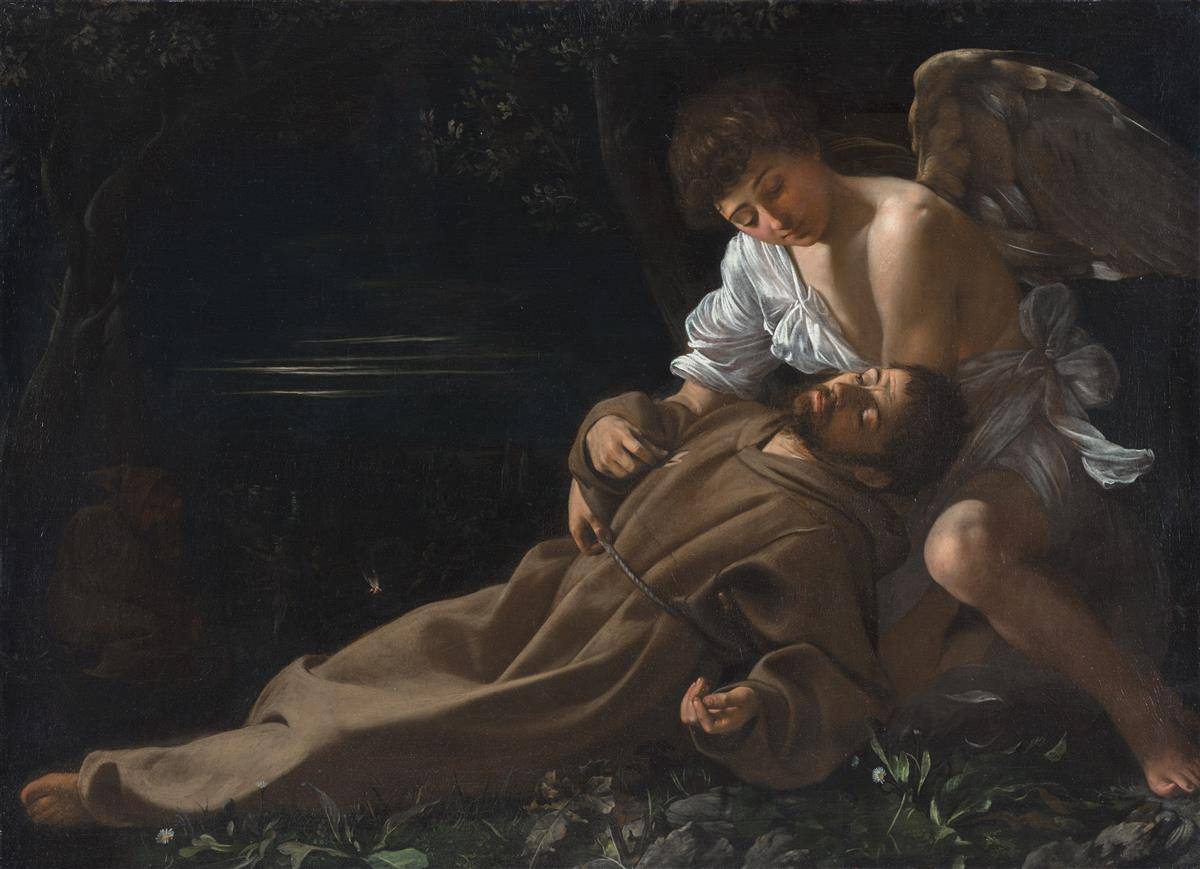Caravaggio (1571-1610)
Estasi di San Francesco (Francis of Assisi in Ecstasy)
c.1595–1596
Oil on canvas, 94 x 129.5 cm
Wadsworth Atheneum, Hartford
Curatorial Narrative: Caravaggio revolutionized the painting of his era through a theatrical use of light, dramatic narrative, and the naturalistic depiction of everyday people and objects. These hallmarks can already be seen here, in his first known religious composition. Saint Francis is just emerging from an ecstatic state cradled by an angel, while shepherds sit in the shadowy background
bathed in a mystical light. Identifying himself with Christ’s suffering, Saint Francis has just received the stigmata—the actual wounds of the Crucifixion—visible only on his side in Caravaggio’s interpretation.
Collection Catalog Narrative: Michelangelo Merisi da Caravaggio revolutionized the painting of his time through his depiction of everyday people in historical scenes, his dramatic use of light, his brilliant naturalism in painting details of objects and nature, and his psychological interpretation of narrative. These qualities can be seen here in his first known religious composition. Caravaggio painted “Saint Francis of Assisi in Ecstasy” in Rome for the Genoese banker and art collector Ottavio Costa. Saint Francis is just emerging from an ecstatic state cradled by an angel, while shepherds sit in the shadowy background bathed in a mystical light. Identifying himself with Christ’s suffering, Saint Francis has just received the stigmata—the actual wounds of the Crucifixion—visible only on his side. In 1943, this painting became the first by Caravaggio to enter a public collection in the United States. It is considered to be one of the most important Baroque paintings in America. (WA)
